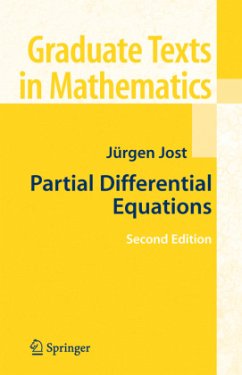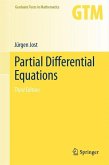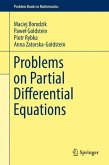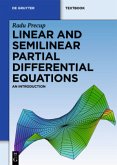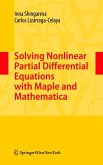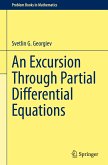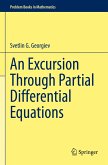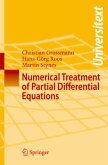This textbook is intended for students who wish to obtain an introduction to the theory of partial di?erential equations (PDEs, for short), in particular, those of elliptic type. Thus, it does not o?er a comprehensive overview of the whole ?eld of PDEs, but tries to lead the reader to the most important methods and central results in the case of elliptic PDEs. The guiding qu- tion is how one can ?nd a solution of such a PDE. Such a solution will, of course, depend on given constraints and, in turn, if the constraints are of the appropriate type, be uniquely determined by them. We shall pursue a number of strategies for ?nding a solution of a PDE; they can be informally characterized as follows: (0) Write down an explicit formula for the solution in terms of the given data (constraints). This may seem like the best and most natural approach, but this is possible only in rather particular and special cases. Also, such a formula may be rather complicated, so that it is not very helpful for detecting qualitative properties of a solution. Therefore, mathematical analysis has developed other, more powerful, approaches. (1) Solve a sequence of auxiliary problems that approximate the given one, and show that their solutions converge to a solution of that original pr- lem. Di?erential equations are posed in spaces of functions, and those spaces are of in?nite dimension.
Hinweis: Dieser Artikel kann nur an eine deutsche Lieferadresse ausgeliefert werden.
Hinweis: Dieser Artikel kann nur an eine deutsche Lieferadresse ausgeliefert werden.
From the reviews: "Because of the nice global presentation, I recommend this book to students and young researchers who need the now classical properties of these second-order partial differential equations. Teachers will also find in this textbook the basis of an introductory course on second-order partial differential equations." - Alain Brillard, Mathematical Reviews "Beautifully written and superbly well-organised, I strongly recommend this book to anyone seeking a stylish, balanced, up-to-date survey of this central area of mathematics." - Nick Lord, The Mathematical Gazette From the reviews of the third edition: "This revised version gives an introduction to the theory of partial differential equations. ... Every chapter has at the end a very helpful summary and some exercises. This book is very useful for a PhD course." (Vincenzo Vespri, Zentralblatt MATH, Vol. 1259, 2013)
From the book reviews:
"This graduate-level book is an introduction to the modern theory of partial differential equations (PDEs) with an emphasis on elliptic PDEs. ... The book is undoubtedly a success in the presentation of diverse methods in PDEs at such an introductory level. The reader has a great opportunity to learn basic techniques underlying current research in elliptic PDEs and be motivated for advanced theory of more general elliptic PDEs and nonlinear PDEs." (Dhruba Adhikari, MAA Reviews, December, 2014)
"This revised version gives an introduction to the theory of partial differential equations. ... Every chapter has at the end a very helpful summary and some exercises. This book is very useful for a PhD course." (Vincenzo Vespri, Zentralblatt MATH, Vol. 1259, 2013)
"Because of the nice global presentation, I recommend this book to students and young researchers who need the now classical properties of these second-order partial differential equations. Teachers will also find in this textbook the basis of an introductory course on second-order partial differential equations."
- Alain Brillard, Mathematical Reviews
"Beautifully written and superbly well-organised, I strongly recommend this book to anyone seeking a stylish, balanced, up-to-date survey of this central area of mathematics."
- Nick Lord, The Mathematical Gazette
"This graduate-level book is an introduction to the modern theory of partial differential equations (PDEs) with an emphasis on elliptic PDEs. ... The book is undoubtedly a success in the presentation of diverse methods in PDEs at such an introductory level. The reader has a great opportunity to learn basic techniques underlying current research in elliptic PDEs and be motivated for advanced theory of more general elliptic PDEs and nonlinear PDEs." (Dhruba Adhikari, MAA Reviews, December, 2014)
"This revised version gives an introduction to the theory of partial differential equations. ... Every chapter has at the end a very helpful summary and some exercises. This book is very useful for a PhD course." (Vincenzo Vespri, Zentralblatt MATH, Vol. 1259, 2013)
"Because of the nice global presentation, I recommend this book to students and young researchers who need the now classical properties of these second-order partial differential equations. Teachers will also find in this textbook the basis of an introductory course on second-order partial differential equations."
- Alain Brillard, Mathematical Reviews
"Beautifully written and superbly well-organised, I strongly recommend this book to anyone seeking a stylish, balanced, up-to-date survey of this central area of mathematics."
- Nick Lord, The Mathematical Gazette

